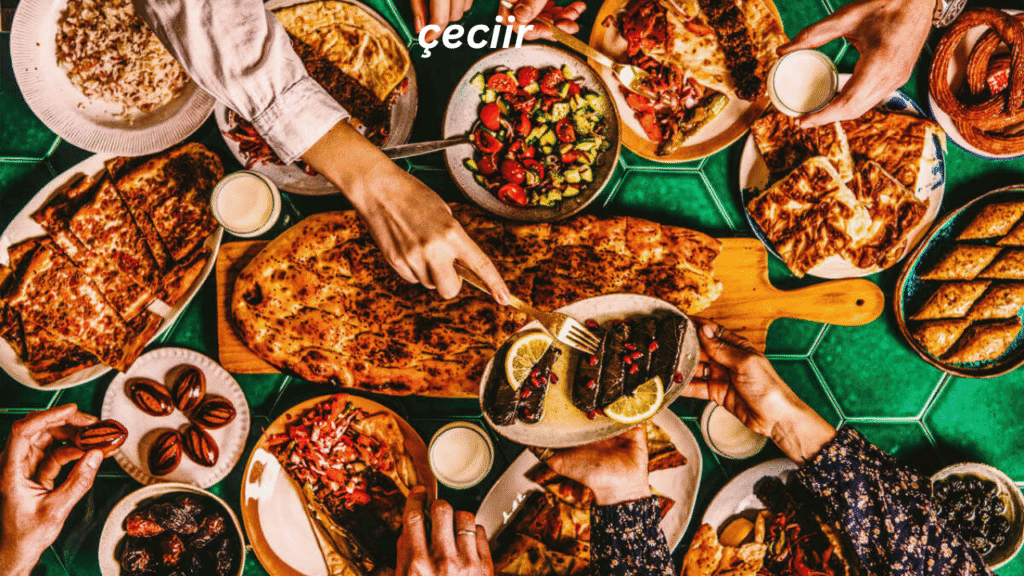In the rich tapestry of Somali cuisine, çeciir stands out as a cherished dish that embodies the essence of Somali culture and hospitality. This traditional food, çeciir enjoyed during communal gatherings, offers more than just nourishment—it serves as a symbol of community, heritage, and the enduring spirit of the Somali people.
What Is Çeciir?
Definition and Description
Çeciir is a traditional Somali dish primarily made from chickpeas, known for its hearty texture and rich flavor. The chickpeas are typically roasted and seasoned with a blend of spices, creating a savory snack that is both satisfying and flavorful. The preparation of çeciir varies across regions, with some variations incorporating additional ingredients like garlic, onions, or chili to enhance its taste.
Origins and Historical Background

The origins of çeciir trace back to the nomadic lifestyles of Somali ancestors, who relied on simple, portable foods that could sustain them during their travels. Chickpeas, being durable and nutritious, became a staple in their diet. Over time, the preparation and consumption of çeciir evolved, becoming an integral part of Somali culinary traditions. Its significance grew beyond mere sustenance, symbolizing hospitality and community bonding.
How Çeciir Is Made
Traditional Ingredients
The primary ingredient in çeciir is chickpeas, which are known for their high protein content and versatility. In traditional recipes, chickpeas are often roasted to bring out their nutty flavor. Seasonings such as salt, cumin, and sometimes chili are added to taste. In some regions, variations of çeciir may include additional ingredients like garlic or onions to enhance the flavor profile.
Cooking Methods
The preparation of çeciir involves roasting the chickpeas until they achieve a golden-brown color, which intensifies their flavor. The roasted chickpeas are then seasoned with a blend of spices. This simple yet effective cooking method preserves the nutritional value of the chickpeas while infusing them with rich flavors. The process is often communal, with families and communities coming together to prepare and enjoy the dish.
Variations and Regional Styles
While the basic preparation of çeciir remains consistent, regional variations exist that reflect local tastes and available ingredients. For instance, in coastal areas, çeciir might be prepared with a hint of citrus to complement the seafood-rich diet. In contrast, inland regions may incorporate heartier spices or additional legumes to suit the local palate. These regional adaptations showcase the versatility of çeciir and its ability to absorb local flavors.
Cultural Significance of Çeciir
Role in Somali Social Life
Çeciir plays a pivotal role in Somali social life, often served during gatherings and celebrations. Its preparation and consumption are communal activities that foster a sense of unity and belonging. Sharing a bowl of çeciir is more than just a culinary experience; it is a ritual that strengthens social bonds and reinforces community ties.
Symbol of Identity and Heritage
Beyond its role as a food item, çeciir serves as a symbol of Somali identity and heritage. The dish embodies the values of hospitality, generosity, and community that are central to Somali culture. Its preparation and sharing are acts of cultural preservation, ensuring that traditional practices are passed down through generations.
Religious and Seasonal Importance
Çeciir holds particular significance during religious and seasonal events. During Ramadan, for instance, it is common to break the fast with a serving of çeciir, symbolizing the end of a day of fasting and the beginning of communal celebration. Similarly, during Eid and other festive occasions, çeciir is prepared and shared, reinforcing its role in marking important cultural and religious milestones.
Çeciir in the Modern World
Globalization and Diaspora Influence
As Somali communities have spread across the globe, çeciir has transcended its traditional boundaries, finding its way into the culinary landscapes of various countries. In diaspora communities, çeciir serves as a connection to homeland traditions, offering a taste of Somalia to those living abroad. Its presence in international food markets and restaurants underscores its growing global appeal.
Çeciir in Contemporary Food Trends
In the context of contemporary food trends, çeciir aligns with movements towards plant-based and sustainable eating. Chickpeas, being a source of plant-based protein, are increasingly recognized for their health benefits. The simplicity and nutritional value of çeciir make it a favorable choice for health-conscious individuals seeking wholesome, plant-based options.
Challenges to Preservation
Despite its rich cultural significance, çeciir faces challenges in preservation. The pressures of modernization and globalization threaten traditional food practices, including the preparation of çeciir. Efforts are being made within Somali communities to document recipes, teach younger generations, and promote the cultural importance of çeciir to ensure its survival for future generations.
Conclusion
Çeciir is more than just a dish; it is a testament to the resilience and richness of Somali culture. From its humble beginnings as a nomadic food to its status as a symbol of hospitality and community, çeciir encapsulates the essence of Somali identity. As the world becomes more interconnected, it is essential to preserve and celebrate such culinary traditions, ensuring that they continue to nourish both the body and the soul for generations to come.
You May Also Read: https://duzznews.com/speedyshort/
